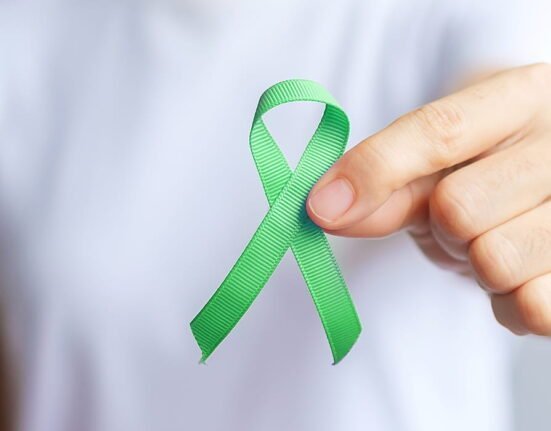We often find ourselves browsing through headlines, and there it is, a burst of news filled with violence, wars, floods, political issues, economic downfall, financial burdens and more. It’s making you constantly anxious, but you simply can’t stop scrolling through the news. You tell yourself it’s to be more aware of global happenings, but there is something darker behind this browsing. This is doom scrolling, the compulsive consumption of endless negative news that gradually deteriorates mental health.
Doom scrolling was coined during the peak of the COVID-19 pandemic, a time when all hope felt lost and people began sinking into a cycle of fear and negativity (Satici et al., 2022). Doom scrolling has only increased since then. While being informed about global happenings is necessary, constantly focusing only on the negative aspects can lead to an exhausted and restless mind, overwhelmed with anxiety and pessimism.
Read More: What is Doomscrolling?
Psychology Behind Doom Scrolling
1. Negative Bias
Negative bias is a biological and instinctual tendency to focus on negative information. Research by Baumeister et al. (2001) showed that the human brain tends to pay more attention to the negative aspects as compared to the positive ones. This is an evolutionary process, as being vigilant and having a negative bias is tied to the survival instinct.
Although the dangers from ancient times have changed, the brain’s stress response remains the same. Therefore, while browsing bad news, our brain is in a constant fight-or-flight mode, causing distress to our mental health. From the olden ages, when it helped us remain prepared and informed about dangers, it now contributes to helplessness, exacerbating anxiety and depression (Krenn, 2025).
2. Fear of Missing Out (FOMO)
Individuals with FOMO also have an innate tendency to compulsively check the information, despite it being upsetting or negative. This compulsion results from the fear of missing any important updates, particularly during negative happenings filled with uncertainty. (Caudwell, 2024).
3. Release of Dopamine
Although doomscrolling involves negative news leading to feelings of depression and anxiety, it unlocks dopamine in the brain, providing a sense of satisfaction during the scroll. Doomscrolling is an addictive behaviour. The more a person scrolls, the more the release of dopamine is released. But after a while of browsing, the anxiety increases, and to ease the discomfort, they scroll even more. This creates a vicious cycle of doomscrolling (University Hospitals, 2024).
4. Desire to Stay Informed
Sometimes, our doomscrolling can simply start with the urge to remain updated and informed about the events. It may provide a sense of control in the form of being aware of the unpredictable negative events via news and other sources of information.
5. Intolerance to Uncertainty
Research has shown that individuals who are highly intolerant of uncertainty may doomscroll to relieve their anxiety. However, this usually backfires, as the constant need for reassurance and validation can amplify the feelings of anxiety rather than easing them(Türk-Kurtça & Kocatürk, 2025).
6. Obsessive Compulsive Disorder (OCD)
Individuals with OCD are prone to increasing doomscrolling. Obsessive Compulsive Disorder is a psychological condition that causes behaviours and thoughts to repeat obsessively. Due to this condition, these individuals may struggle with doomscrolling and may repeatedly check for recurring updates. This can also trigger increased anxiety and other mental health conditions (Cleveland Clinic, 2024).
Read More: Doomscrolling: Why We Do It, How It Affects Us, and How to Break the Cycle
Impact of Doom Scrolling on Mental and Physical Health
Doomscrolling can take a significant toll on both mental and physical well-being. Several studies and research highlight how this habit affects the brain, body and overall lifestyle (Satici et al., 2022). Below are a few effects of doomscrolling:
1. Deterioration of Attention Span
Doom scrolling involves constant stimulation of the brain, and the majority of the attention is used to consume negative information. This gradually reduces attention, making it difficult to focus on the more meaningful tasks (Krenn, 2025).
2. Cognitive Fatigue
Repeatedly encountering negativity captures your attention so thoroughly that it overwhelms the working memory, leading to cognitive fatigue and decreasing the ability to manage tasks productively (Krenn, 2025).
3. Doom Scrolling Changes Your Perception of Reality
The more time an individual spends consuming negativity through doomscrolling, the more their perception of reality becomes distorted. They are constantly vigilant and fearful of any anticipatory danger, making them hyper-alert and emotionally drained (Krenn, 2025).
4. Doom Scrolling Can Cause Secondary Trauma
Constant exposure to negative news can lead to vicarious trauma. This means that simply seeing or hearing about traumatic events repeatedly can have emotional effects similar to those experienced when the trauma is experienced firsthand (Salleh & Qadar, 2024).
5. Quality of Life Depends on Both Mental and Physical Wellness
Doomscrolling can create an imbalance in physical health, leading to frequent problems like sleep disorders (particularly insomnia), loss of physical activity, unhealthy eating habits and weight gain. In the long run, doomscrolling can also exacerbate the risk of developing conditions like high blood pressure and other health issues caused by stress. This vicious cycle leads individuals to have a lifestyle surrounded by lethargy, negativity and persistent fatigue(Olivine, 2023).
Read More: Doom scrolling – can’t keep your eyes off bad news? Tips to break the pattern
Groups Vulnerable to Doom Scrolling
Although anyone can engage in doomscrolling, certain groups, including women, young adults, individuals with a history of trauma and those who have or are prone to anxiety and depression, are more susceptible to doomscrolling.
- Women: A study by Harvard suggested that women are more emotionally influenced by doomscrolling due to the increased violent media content that revolves around women and children. These kinds of offences that are targeted particularly at female sex may add to the emotional distress, leading to mental conflict (Salamon, 2024).
- Young adults: Young adults are still in a stage of brain development, making them more sensitive to the instant gratification from social media. Additionally, they are prone to unlimited scrolling because they feel pressure to stay connected with their peers, and since they are in a developmental phase, they require more feel-good chemicals like dopamine, which is produced by doomscrolling (University Hospitals, 2024).
- Past Trauma: Individuals who have experienced trauma may use doomscrolling as a coping mechanism since they are hypervigilant of any danger, and doomscrolling can be one way of being aware of the situation, allowing them to feel a sense of control over it (Salamon, 2024).
- Individuals with Anxiety or Depression: People with mental health disorders like anxiety and depression or those vulnerable to such conditions might use doomscrolling as an escape strategy, but it mostly backfires, leaving them feeling more dejected.
How to Stop This Cycle of Doom Scrolling!
- Put Your Devices Away: Keeping your phone at a distance (possibly during meals, bedtime, or working on a particularly challenging task) will help decrease the temptation to scroll mindlessly. When something is repeatedly out of sight, it often becomes out of habit (Cleveland Clinic, 2024).
- Establish a Time Limit and Turn Off Notifications: Make use of screen timers and turn off all the notifications to decrease distractions and regain control of your focus (Salamon, 2024).
- Manage Your Social Media Feed: Search for positive news and information. Every day, there are several acts of kindness, volunteering, and other humanitarian acts, so follow those social media pages that make you feel good and motivated and unfollow those that constantly generate negative news (Cleveland Clinic, 2024).
- Be More Mindful of Phone Usage: Put some thought into checking your phone. Ask yourself why you want to check the update, and rather than just mindlessly scrolling, be conscious of your browsing (Cleveland Clinic, 2024).
- Gratitude Changes Everything: Gratitude is often necessary, as doomscrolling can decrease our faith in humanity. Every day, take some time to write down a few things for which you are grateful. This will help your brain to focus less on fear and worry about the future and more on the positive aspects that you appreciate (Salamon, 2024).
- Exercise: Your Antidote to Doomscrolling: Physical activity is essential as it helps release stress, activate dopamine and increase an individual’s productivity and energy (Cleveland Clinic, 2024).
- Disengage From Social Media Periodically: Create a schedule with enough breaks from digital media to relax your mind and reconnect with the current moment (Cleveland Clinic, 2024).
- Seek Help: If you feel trapped in the cycle of doomscrolling and it is leading to poor mental well-being, do not hesitate to discuss the matter with family members and friends. You can also seek help from mental health professionals (Salamon, 2024).
Conclusion
Although doom scrolling may seem like an attempt to keep up with current events, it can take a significant toll on your mental and physical health. It increases anxiety, decreases your concentration, and leads to a vicious cycle of stress that is difficult to overcome. This habit affects many people; however, particularly women, young adults, and individuals with a history of trauma or mental health issues are more vulnerable.
Nevertheless, with a strong will, this habit can be broken. You can break the cycle by becoming more aware, regularly taking breaks from devices, curating more balanced content in your feed and seeking help when necessary. Taking care of your peace of mind starts with small, intentional choices, including deciding which information you want your mind to consume.
FAQs
1. Why are we drawn to negative news?
The human brain is wired to pay more attention to negative news because of the evolutionary instinct to sense danger.
2. What’s the difference between staying informed and doomscrolling?
Staying informed and doomscrolling are significantly different. Staying informed involves balancing information (both positive and negative news), whereas doomscrolling involves mindless consumption of negative news.
3. Is there a connection between doomscrolling and personality traits?
Yes, research suggests a link between doomscrolling and personality traits. Individuals with a high level of neuroticism, a low level of conscientiousness and agreeableness are susceptible to increased doomscrolling.
4. How does the prefrontal cortex relate to doomscrolling?
The prefrontal cortex handles rational thinking and impulse control, which shows reduced activity during doomscrolling. This enables the individual to just mindlessly scroll.
5. What is the role of the amygdala in doomscrolling?
The amygdala is the emotional centre of the brain. While doomscrolling, the amygdala gets activated and triggers a fight or flight response due to the negative news and becomes hyper-vigilant against threats.
References +
Baumeister, R. F., Bratslavsky, E., Finkenauer, C., & Vohs, K. D. (2001). Bad is stronger than good. Review of General Psychology, 5(4), 323–370.
Caudwell, K. M. (2024). How “FOMO” leads to “doomscrolling” and problematic social media use. Scroll. in. https://scroll.in/article/1068525/how-fomo-leads-to-doomscrolling and-problematic-social-media-use
Cleveland Clinic. (2024). Everything You Need to Know About Doomscrolling and How to Avoid It. Cleveland Clinic; Cleveland Clinic.https://health.clevelandclinic.org/everything you-need-to-know-about-doomscrolling-and-how-to-avoid-it
Krenn, J. (2025). Doomscrolling: Why Can’t We Stop? Psychology Today. https://www.psychologytoday.com/us/blog/screen-time/202502/doomscrolling-why cant-we-stop
Olivine, A. (2023). Doomscrolling: Definition, Effects, Mental Health Support. Verywell Health. https://www.verywellhealth.com/doomscrolling-7503386#toc-effect-of doomscrolling-on-mental-health
Salamon, M. (2024). Doomscrolling dangers. Harvard Health. https://www.health.harvard.edu/mind-and-mood/doomscrolling-dangers
Salleh, A., & Qadar, S. (2024). How doomscrolling can lead to “vicarious trauma” and post-traumatic stress disorder symptoms. Abc.net.au; ABC News. https://www.abc.net.au/news/health/2024-07-05/doomscrolling-vicarious-trauma-gaza israel/104022894
Satici, S. A., Gocet Tekin, E., Deniz, M. E., & Satici, B. (2022). Doomscrolling Scale: Its Association with Personality Traits, Psychological Distress, Social Media Use, and Wellbeing. Applied Research in Quality of Life, 18(2), 833–847. https://doi.org/10.1007/s11482-022-10110-7
Türk-Kurtça, T., & Kocatürk, M. (2025). Beyond the Scroll: Exploring How Intolerance of Uncertainty and Psychological Resilience Explain the Association Between Trait Anxiety and Doomscrolling. Personality and Individual Differences, 233(112919), 112919. https://doi.org/10.1016/j.paid.2024.112919 University Hospitals. (2024). Doomscrolling: Breaking the Habit. Uhhospitals.org. https://www.uhhospitals.org/blog/articles/2024/07/doomscrolling-breaking-the-habit













Leave feedback about this